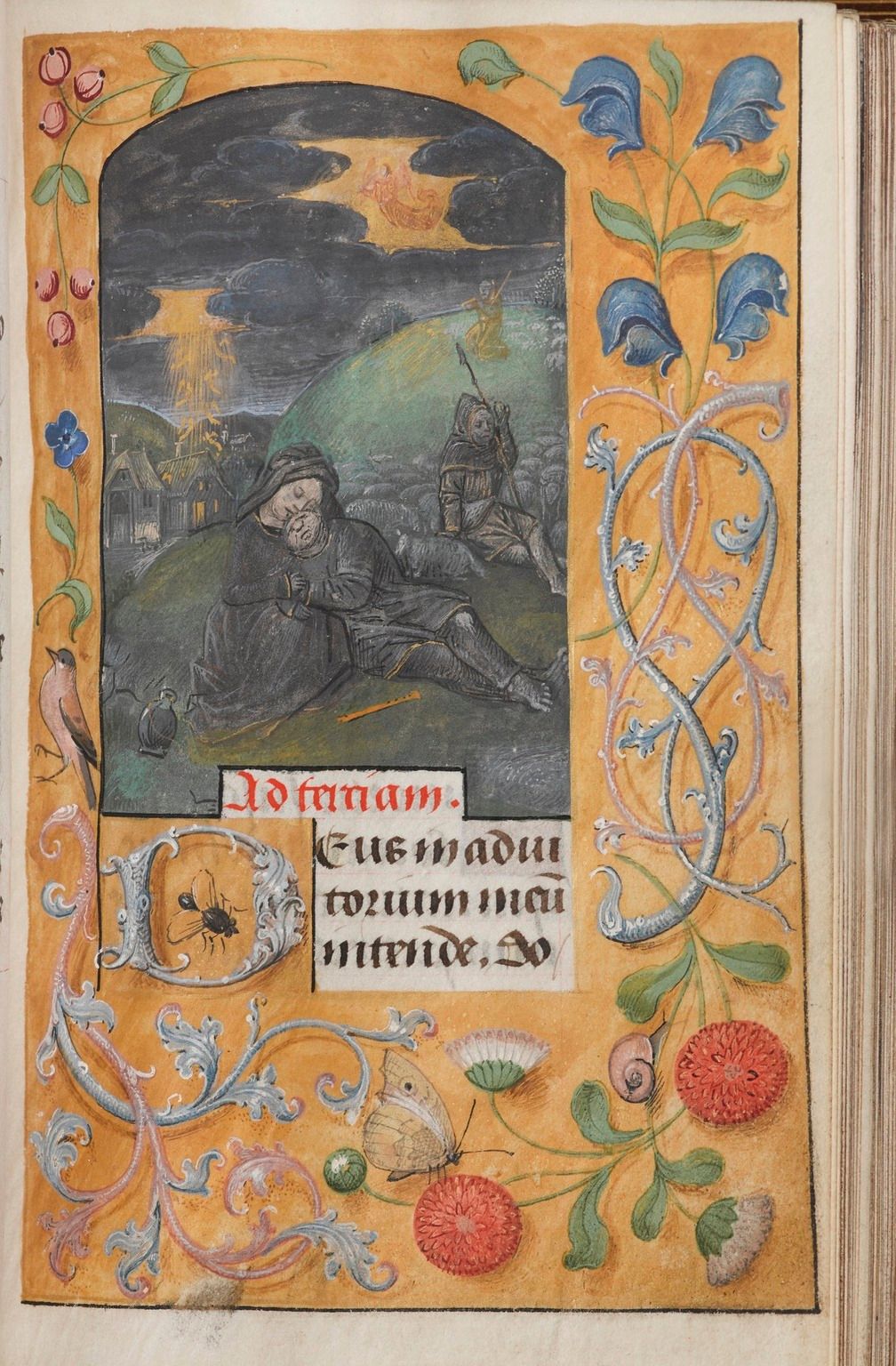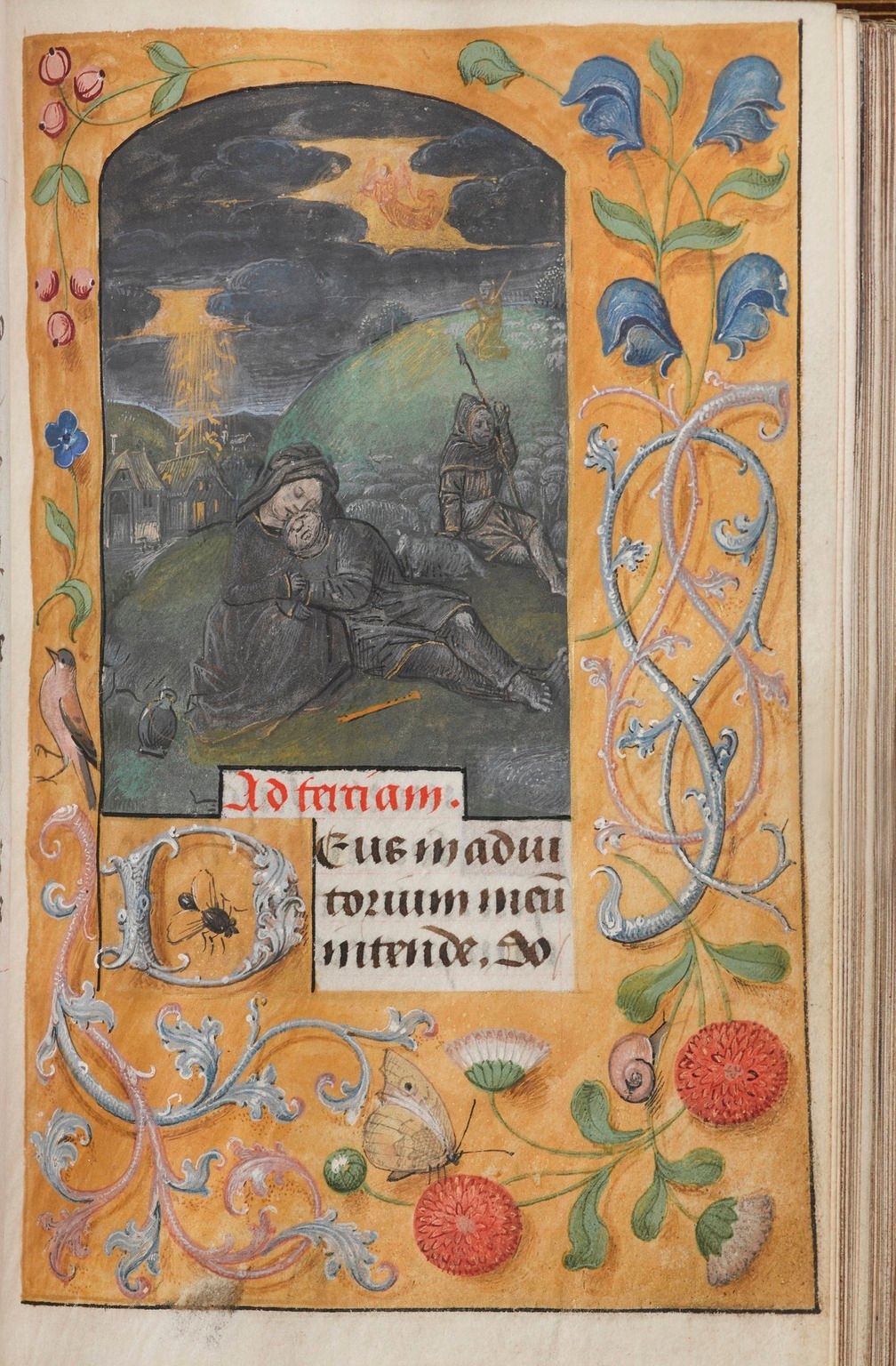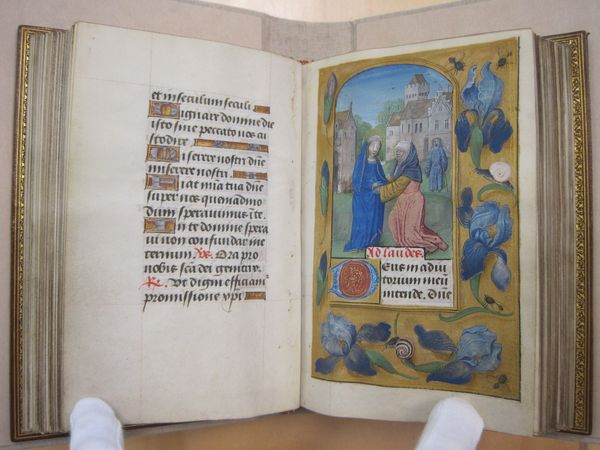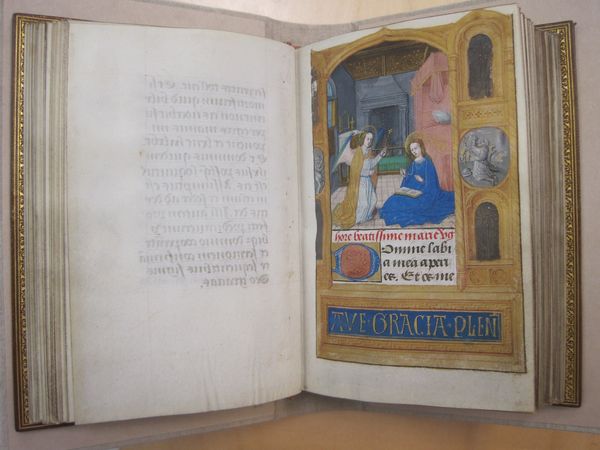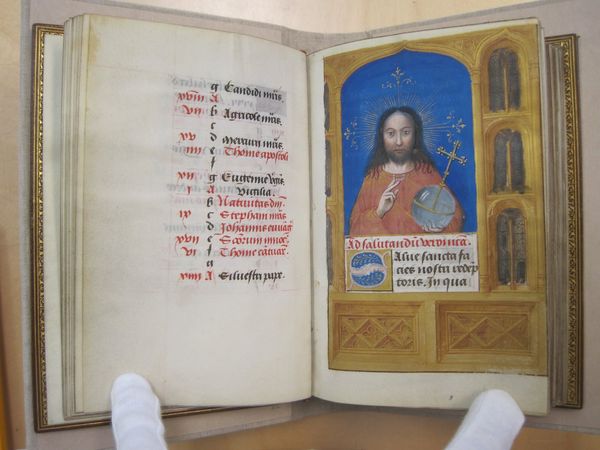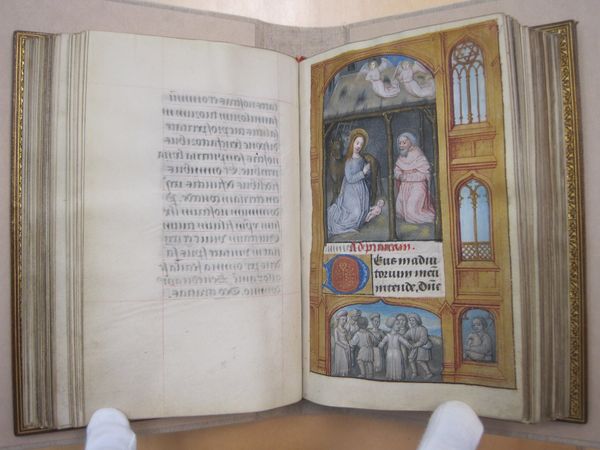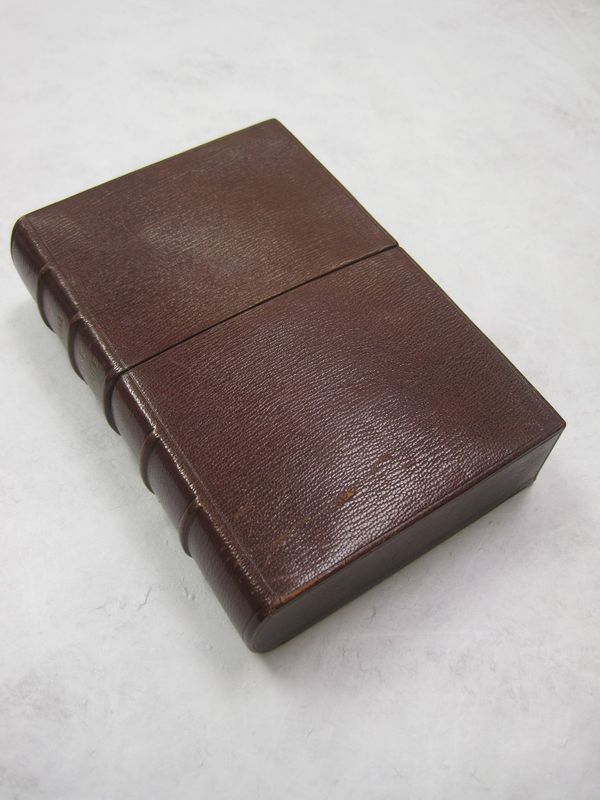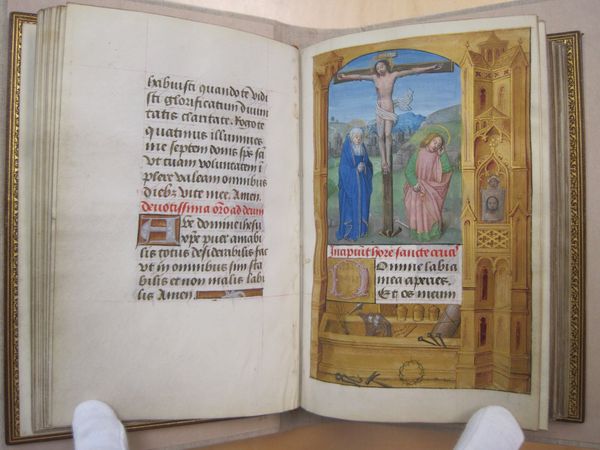About the Image:
This is a beautifully detailed page from a Book of Hours, specifically the "Horae Beatae Mariae Virginis." These books, predominantly used during the late Middle Ages into the Renaissance, were Christian devotional books primarily for laypeople. They typically contained prayers, Psalms, and Gospel lessons to be recited at specific canonical hours of the day.
Several elements stand out in this manuscript:
- Illumination: The detailed artistry that decorates the manuscript is called "illumination." This includes the decorative borders with plants, animals, and intricate designs, as well as the primary image depicted.
- Central Scene: We see a nocturnal scene where a monk or cleric holds a baby, with another figure playing a musical instrument in the background, set against a landscape with buildings. The presence of divine light illuminating the night sky suggests a sacred or heavenly intervention, possibly a biblical narrative or a saint's story.
- Marginalia: The borders are filled with intricate floral designs, animals, and insects. Such designs were common in Flemish manuscripts from this period. Every small detail, from the snail to the butterfly, has been painted with precision. These not only serve as decoration but also can hold symbolic meaning or simply represent a keen observation of nature.
- Text: The Latin text provides the devotional content for this particular hour. The distinct and ornate script is typical of the care scribes took in crafting these manuscripts.
- Culture & Medium: Given that it's Flemish in origin and dates back to ca. 1510-1530, this piece belongs to the Northern Renaissance period. During this time, there was a strong emphasis on detail and realism, which is evident in the depiction of the figures and the natural elements. The use of opaque watercolor, ink, and gold signifies the richness and value of these manuscripts.
In summary, this manuscript page is an exquisite representation of the artistry and devotion embedded in religious texts of the time. Books like these were often treasured possessions, reflecting not only the piety of their owners but also the skill and craftsmanship of the artists and scribes of the period.
🙏🏽
This image is in the public domain.
